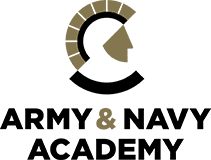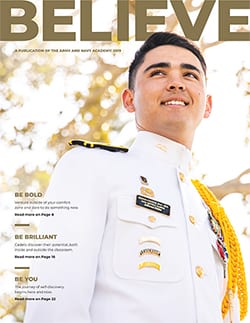Choosing a private middle school requires careful thought and consideration. The 12 tips cited below will help you choose the best private school for your middle schooler and put your mind at ease before making a final decision.
As you peruse the tips below, think about your preferences and the difference you want the school to make in your child’s life. This exercise will help narrow down your private middle school choices.
As you can imagine, there are all sorts of private schools in the U.S. to choose from, including: junior high public schools, private middle schools, junior boarding schools, and even military middle schools. So, when choosing a private middle school, choose the one that is best-suited to your child’s specific needs..
As you review the twelve tips below, we recommend jotting down questions next to each tip to maximize communications with admission offices.

Choosing the Best Private Middle School
1. Day or Boarding – Are you searching online for a “private middle school near me”? If so, lots of public and private school options should show up in Google search results. However, if you are open to your middle schooler living away from home, searching for a junior boarding school outside of your city or even in your regional area would expand your options.
Bear in mind that most boarding schools offer both day and boarding options. At some boarding schools, students often begin as day students in middle school and then enroll as a boarding school student in high school. Most boarding schools also offer school transfers during the academic year or mid-year if they offer rolling admission.
2. Location – Location is often a critical factor in choosing a private middle school. However, if you are open to a junior boarding school, then think about local, regional and national options. But even if your child will be a day student, think outside your city limits. While some middle schools do provide transportation, most parents transport their kids to school on their way to work. For example, if you live in San Diego county, there are many private schools in surrounding communities.
For instance, there is a private middle school in Carlsbad that offers both boarding and day options. If you commute heading north toward Orange County or Los Angeles, this school could work well for you or you might choose a north county coastal private middle school in Carlsbad, Oceanside, Encinitas, or Cardiff.
3. Mission, Values, Philosophy – Every private middle school should have a core mission, set of values, and educational philosophy. Make sure you check private school websites for this type of information and ask questions on tour.
This kind of information is frequently located under the “about us” section of private school websites. When making a private middle school choice, it is important for both you and your middle schooler to feel aligned with the values and overarching mission and philosophy of the school. Explore what the private school heads or presidents have to say about their schools, typically under the “about us” section of websites.
4. School Type – Private middle schools in the U.S. are very diverse and every private school offers a unique set of differentiators. You will have choices for K-8 schools or a combination middle school and high school. You can even choose a specialized private middle school geared for all boys, all girls, gifted and talented, or a school for special needs.
If you think your middle schooler could benefit from a structured school focused on leadership and character development, there are a number of college prep military middle schools in the United States with a focus on life skills, character development, and leadership training.
5. Academic Approach – Private middle schools adopt various methods and approaches based on their educational philosophy. You might see or hear terms like these: college prep, single gender (geared for boys or girls), socratic, behavioristic, social learning, cognitive, experiential, humanist, classical, project-based, interdisciplinary, and research-based.
There is a tremendous amount of research on educational approaches, so don’t be overwhelmed by labels. Speak with the private school admission office about their school’s approach and methods to determine if it is a good fit.
6. Academic Support Systems – If your middle schooler will benefit from specific types of academic support, make sure to ask about the following support services: tutoring services, after school tutorial period with teachers and whether they offer programs for learning differences (if applicable).
If your child has learning differences (e.g. ADHD, Dyslexia, Dysgraphia, make sure you choose a school that offers expertise and provides services and support systems.
If your middle schooler is an international student seeking a prep school with English as a Second Language (ESL) or English for Speakers of Other Languages (ESOL), some junior boarding schools offer ESL or ESOL programs and classes.
7. College Prep and Planning Services – If you think your middle schooler might want to take advanced placement (AP) or honors classes in high school (aka “upper school”), then you might want to ensure the college prep school offers AP and honors classes.
Also, if you think your middle schooler will attend the private school through high school, ask about college planning services, college matriculation, and electives (e.g. aviation, computer science, business, entrepreneurship, visual and performing arts).
8. School Size – While some private middle schools are intentionally very small, including homeschools, charter schools and microschools, many private schools have enrollments in the thousands (e.g. K-12, K-8, Grades 7-12).
By contrast, private day/boarding schools are typically much smaller and tend to be in the 300-400 student body range. On Niche, an educational review website, you can filter by types of private schools in the U.S, grade level, religion, boarding, coed status, specialty areas, academic program, and other filters.
9. Average Class Size – According to the National Association for Educational Statistics (NCES), the average class size at private schools (secondary departmentalized) is trending at 17.7. Keep in mind that class size is often determined by enrollment in the respective class or elective, especially at the high school level.
Every subject could potentially have a different number of students in the subject area, but in middle school, students may be in pods or cohorts of some sort.
10. Campus Life – Check private middle school websites and go on tour to get a feel for campus life. Ask about co-curriculars: sports, clubs, trips, excursions, and weekend activities.
Many private middle schools are quite similar to small college campuses and include full facilities such as: student enrichment centers, state-of-the-art athletic facilities, science labs, counseling centers, health centers, chapels, recreation halls and even makerspaces.
And, don’t forget to ask about Junior Varsity team sports and fitness programs, as well as health, safety, and dining services.
11. Denominational or Non-Denominational – If you have a religious preference for your child’s middle school education, then choosing a denominational school could be quite important to you.
However, keep in mind that some non-denominational schools have specific character development programs to instill and inspire values and principles.
12. Tuition – Last but not least, you may be asking how middle class families afford private school. Even if you are in an upper income bracket, private school affordability could be an issue. Families today are saving for retirement, college, and sometimes even support elderly parents.
There are a number of options that private schools offer to help with tuition affordability including: financial aid, payment plans, loan programs and some schools offer merit awards or other types of scholarships.
Hopefully, you now have a better handle on how to research and ask questions when you speak with the admission team or go on campus tours. By reviewing the tips above, you have a handy checklist as you go through the process of choosing a private middle school.
Finally, remember to have an open discussion with your middle schooler as teens today like to participate in their educational choices. If your child is engaged in choosing a private middle school or junior boarding school, the likelihood of success is far greater.
Questions? Feel free to contact us. Our admission team is very familiar with the private school sector and we’re standing by to help you out. If our middle school is not the right fit, we can refer you to other public or private schools near you. In particular, given our school’s location in Carlsbad, California, we are very familiar with private middle schools in Carlsbad and San Diego, military middle schools, and junior boarding schools in the U.S..


